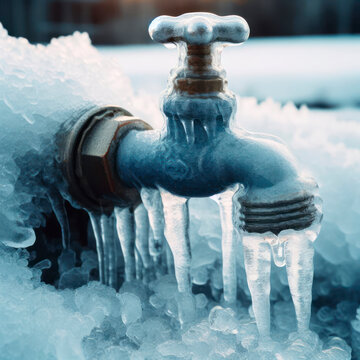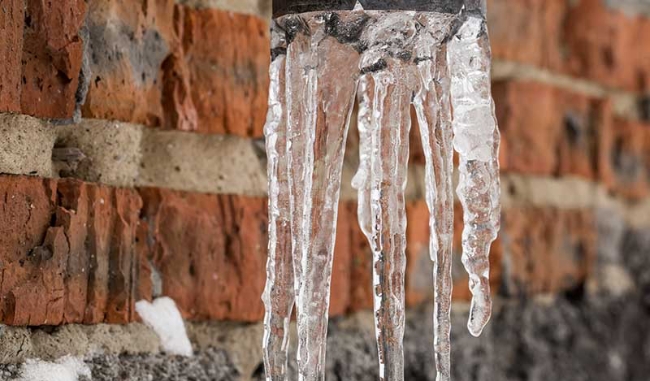Avoiding Frozen Plumbing in Cold Weather: Pro Tips
Avoiding Frozen Plumbing in Cold Weather: Pro Tips
Blog Article
Are you hunting for information and facts about Helpful Tips to Prevent Frozen Pipes this Winter?

Cold weather can damage your pipes, specifically by freezing pipelines. Right here's just how to stop it from occurring and what to do if it does.
Introduction
As temperatures drop, the threat of icy pipes rises, possibly bring about expensive fixings and water damage. Understanding exactly how to prevent icy pipelines is vital for house owners in cold climates.
Comprehending Icy Pipes
What creates pipes to freeze?
Pipes ice up when subjected to temperature levels below 32 ° F (0 ° C) for expanded durations. As water inside the pipelines freezes, it increases, taxing the pipe walls and potentially creating them to break.
Threats and problems
Icy pipes can bring about water interruptions, residential or commercial property damage, and expensive fixings. Burst pipes can flood homes and trigger considerable architectural damages.
Indications of Frozen Pipeline
Identifying frozen pipes early can stop them from rupturing.
Just how to recognize frozen pipelines
Look for decreased water circulation from taps, unusual smells or noises from pipelines, and noticeable frost on exposed pipelines.
Avoidance Tips
Shielding prone pipelines
Cover pipes in insulation sleeves or make use of heat tape to shield them from freezing temperatures. Focus on pipelines in unheated or external locations of the home.
Heating techniques
Keep interior spaces appropriately heated, especially locations with pipes. Open up cupboard doors to allow warm air to circulate around pipelines under sinks.
Safeguarding Outside Plumbing
Yard tubes and outside faucets
Disconnect and drain pipes garden hoses prior to winter season. Mount frost-proof spigots or cover outside taps with insulated caps.
What to Do If Your Pipelines Freeze
Immediate actions to take
If you believe icy pipes, maintain faucets open up to soothe stress as the ice thaws. Make use of a hairdryer or towels taken in hot water to thaw pipes gradually.
Long-Term Solutions
Structural modifications
Take into consideration rerouting pipes far from exterior wall surfaces or unheated areas. Add extra insulation to attic rooms, cellars, and crawl spaces.
Updating insulation
Purchase high-grade insulation for pipelines, attic rooms, and walls. Proper insulation assists maintain constant temperature levels and lowers the threat of icy pipelines.
Verdict
Preventing frozen pipelines requires aggressive measures and fast reactions. By understanding the reasons, indicators, and preventive measures, property owners can protect their pipes throughout cold weather.
5 Ways to Prevent Frozen Pipes
Drain Outdoor Faucets and Disconnect Hoses
First, close the shut-off valve that controls the flow of water in the pipe to your outdoor faucet. Then, head outside to disconnect and drain your hose and open the outdoor faucet to allow the water to completely drain out of the line. Turn off the faucet when done. Finally, head back to the shut-off valve and drain the remaining water inside the pipe into a bucket or container. Additionally, if you have a home irrigation system, you should consider hiring an expert to clear the system of water each year.
Insulate Pipes
One of the best and most cost-effective methods for preventing frozen water pipes is to wrap your pipes with insulation. This is especially important for areas in your home that aren’t exposed to heat, such as an attic. We suggest using foam sleeves, which can typically be found at your local hardware store.
Keep Heat Running at 65
Your pipes are located inside your walls, and the temperature there is much colder than the rest of the house. To prevent your pipes from freezing, The Insurance Information Institute suggests that you keep your home heated to at least 65 degrees, even when traveling. You may want to invest in smart devices that can keep an eye on the temperature in your home while you’re away.
Leave Water Dripping
Moving water — even a small trickle — can prevent ice from forming inside your pipes. When freezing temps are imminent, start a drip of water from all faucets that serve exposed pipes. Leaving a few faucets running will also help relieve pressure inside the pipes and help prevent a rupture if the water inside freezes.
Open Cupboard Doors
Warm your kitchen and bathroom pipes by opening cupboards and vanities. You should also leave your interior doors ajar to help warm air circulate evenly throughout your home.

Do you appreciate more info about How To Avoid Freezing Pipes? Give feedback down the page. We would be happy to hear your thinking about this post. We hope to see you back again before long. Liked our piece? Please share it. Let other people find it. Thank-you for your time invested reading it.
Request Your Service Report this page